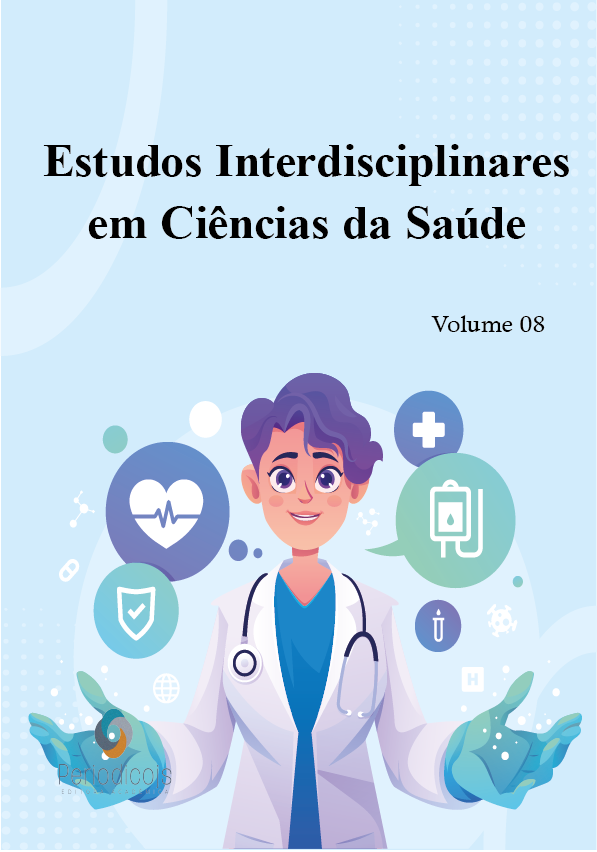Abstract
The aesthetic treatment of the periorbital, lower eyelid, lacrimal groove, eyelid-malar and naso-jugal sulcus is challenging because the region has multifactorial changes. However, it is necessary since these alterations become major aesthetic problems and cause an appearance of tiredness and sadness, generating a great impact on the quality of life. As a possible form of treatment, filling with hyaluronic acid (HA) has been widely used, as one of the safest procedures, which, in addition to promoting an excellent aesthetic result, rarely presents serious adverse effects that, when they occur, can be easily resolved by the degradation of the hyaluronic acid. product. As the entire treatment region is highly vascularized and close to the eyeball, the application of HA through needles may have undesirable complications. The present study brought case reports where treatments were performed with 25G x 50mm cannulas, in the form of micro-bolus (less than or equal to 0.1 ml) and of micro-drops (less than or equal to 0.02 ml) in submuscular and subcutaneous area respectively, demonstrating excellent results and the absence of immediate or late adverse effects of any kind, accompanied by evaluation made through photographic comparisons, based on the Hirmand classification.
References
BOSNIAK, Stephen et al. The hyaluronic acid push technique for the nasojugal groove. Dermatologic surgery, v. 34, n. 1, p. 127-131, 2008.
BRAZ, André Vieira; AQUINO, Bruno Olavarria. Preenchimento do sulco nasojugal e da depressão infraorbital lateral com microcânula 30G. Surgical & cosmetic dermatology, v. 4, n. 2, p. 178-181, 2012.
DA CUNHA, Marisa Gonzaga et al. Preenchimento da goteira lacrimal com ácido hialurônico–técnica superficial. Surgical & Cosmetic Dermatology, v. 7, n. 1, p. 50-55, 2015.
DE MAIO, M. MD CodesTM: A Methodological Approach to Facial Aesthetic Treatment with Injectable Hyaluronic Acid Fillers. Aesthetic Plastic Surgery, 22 maio 2020.
DIASPRO, Alberto; SITO, Giuseppe. Hyaluronic acid for lower eyelid and tear trough rejuvenation: review of the literature. Plastic and Aesthetic Research, v. 7, 2020.
GOLDBERG, Robert Alan; FIASCHETTI, Danica. Filling the periorbital hollows with hyaluronic acid gel: initial experience with 244 injections. Ophthalmic Plastic & Reconstructive Surgery, v. 22, n. 5, p. 335-341, 2006.
HADDOCK, Nicholas T. et al. The tear trough and lid/cheek junction: anatomy and implications for surgical correction. Plastic and reconstructive surgery, v. 123, n. 4, p. 1332-1340, 2009.
HIRMAND, Haideh. Anatomy and nonsurgical correction of the tear trough deformity. Plastic and reconstructive surgery, v. 125, n. 2, p. 699-708, 2010.
KANE, Michael AC. Treatment of tear trough deformity and lower lid bowing with injectable hyaluronic acid. Aesthetic plastic surgery, v. 29, n. 5, p. 363-367, 2005.
MAYES, A. E.; et al. Ageing appearance in China: biophysical profile of facial skin and its relationship to perceived age. J Eur Acad Dermatol Venereol. v. 24, p. 341– 348, 2010.
ROH, Mi Ryung; CHUNG, Kee Yang. Infraorbital dark circles: definition, causes, and treatment options. Dermatologic surgery, v. 35, n. 8, p. 1163-1171, 2009.
STEINSAPIR, Kenneth D.; STEINSAPIR, Samantha MG. Deep-fill hyaluronic acid for the temporary treatment of the naso-jugal groove: a report of 303 consecutive treatments. Ophthalmic Plastic & Reconstructive Surgery, v. 22, n. 5, p. 344-348, 2006.)
STUTMAN, Ross L.; CODNER, Mark A. Tear trough deformity: review of anatomy and treatment options. Aesthetic surgery journal, v. 32, n. 4, p. 426-440, 2012.
TRAN, Christian et al. In vivo bio-integration of three hyaluronic acid fillers in human skin: a histological study. Dermatology, v. 228, n. 1, p. 47-54, 2014.)
WONG, Chin-Ho; HSIEH, Michael KH; MENDELSON, Bryan. The tear trough ligament: anatomical basis for the tear trough deformity. Plastic and reconstructive surgery, v. 129, n. 6, p. 1392-1402, 2012.

